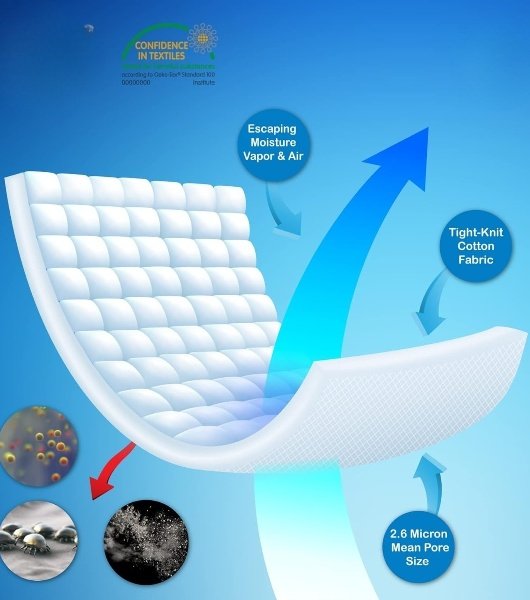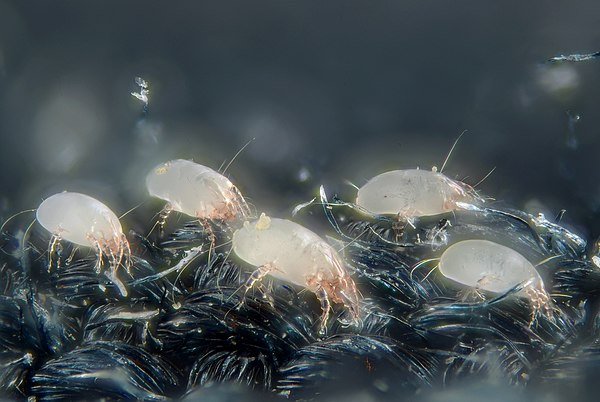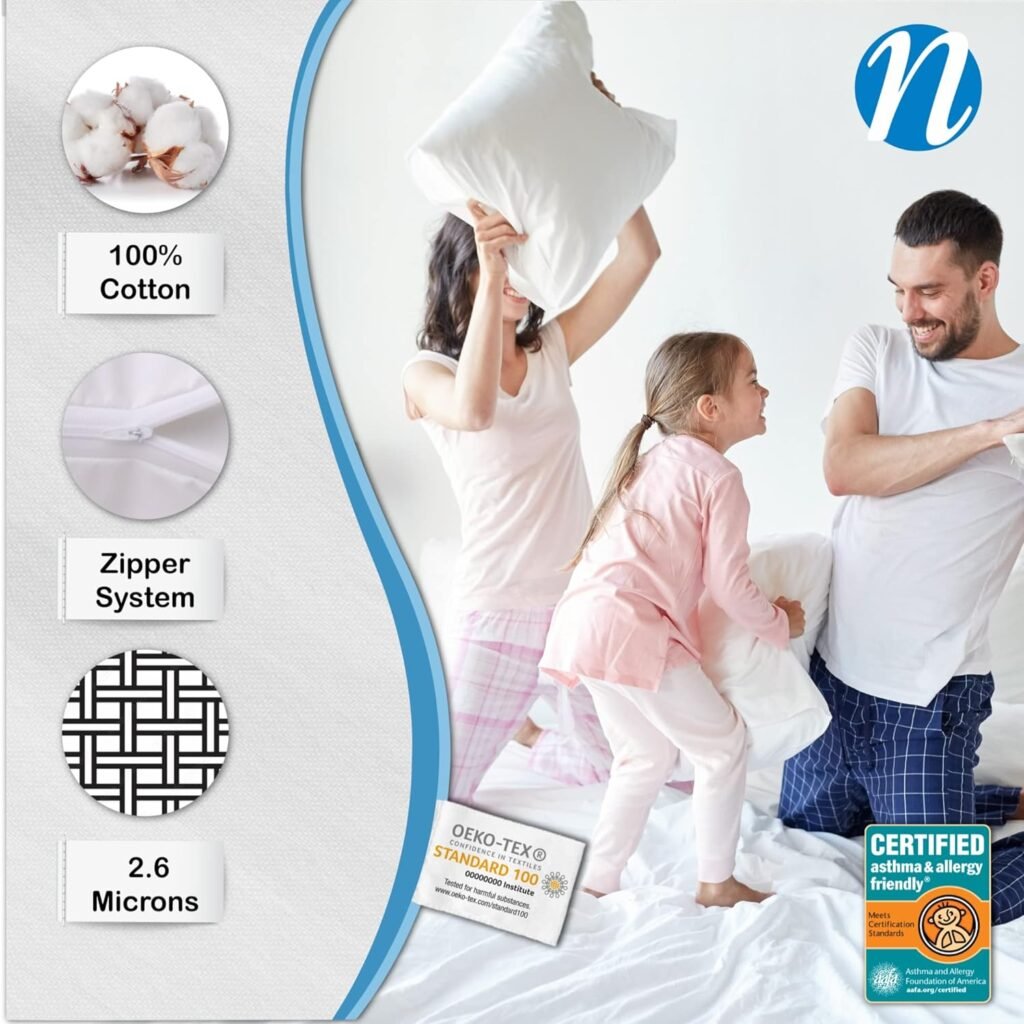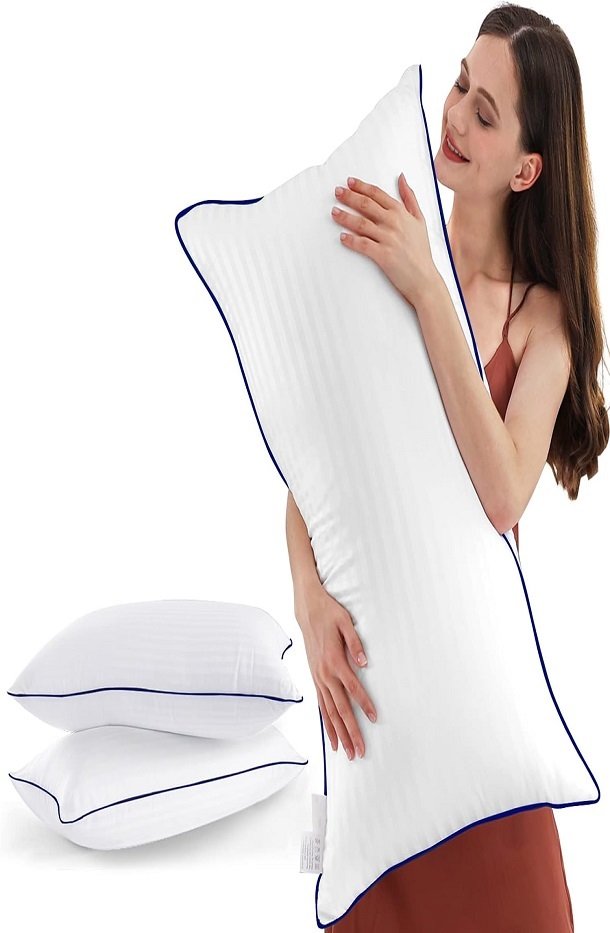If you struggle with allergies, creating a comfortable sleeping environment is essential. One often-overlooked factor in achieving restful sleep is your pillow. The best pillow for your allergy needs can significantly enhance your sleep quality by reducing allergens like dust mites, pet dander, and mold. In this ultimate guide, we’ll explore what makes a pillow suitable for allergy sufferers, the types available, and tips for maintaining them to ensure you breathe easy while you sleep.

Understanding Allergy Triggers in Pillows

Common Allergens Found in Pillows
Pillows can become havens for various allergens. Dust mites, pet dander, pollen, and mold spores are among the most prevalent culprits. Dust mites thrive in warm, humid environments, making pillows an ideal home for them. Each night, as we sleep, we shed skin cells and sweat, creating a perfect habitat for these tiny pests. Additionally, pet dander from our furry friends can cling to pillow surfaces, exacerbating allergy symptoms.

How Pillows Accumulate Allergens Over Time
Over time, pillows can accumulate a surprising amount of allergens. The shedding of skin cells, combined with moisture from sweat, provides a nutritious environment for dust mites and mold. Without regular cleaning or replacement, these allergens can build up, contributing to worsening allergy symptoms and impacting overall sleep quality.
The Impact of Allergens on Sleep Quality
Sleeping with allergens in your pillow can lead to various symptoms, including congestion, sneezing, itchy eyes, and even asthma flare-ups. These discomforts can disrupt your sleep cycle, causing you to toss and turn throughout the night. If you wake up feeling groggy or congested, your pillow could be the culprit.
Key Features of Allergy-Friendly Pillows
Hypoallergenic Materials and Their Benefits
When searching for the best pillow for your allergy needs, hypoallergenic materials are essential. These pillows are specifically designed to minimize allergic reactions and are often made from materials less likely to trigger allergies. Common hypoallergenic materials include:
Synthetic Fibers:
Polyester and similar materials are often treated to resist allergens.
Microfiber:
This tightly woven material helps prevent dust mites and other allergens from penetrating.
Natural Fibers:
Organic cotton and bamboo can also be hypoallergenic but should be properly treated.
Dust Mite Resistant Properties
Some pillows boast special features that make them resistant to dust mites. These pillows often have tightly woven covers or are treated with substances that deter these pests. When looking for the best pillow for your allergy needs, check for labels indicating dust mite resistance or certifications from relevant allergy organizations.
Moisture-Wicking and Breathability Factors
Another critical feature of allergy-friendly pillows is moisture wicking properties. These pillows are designed to keep you cool and dry throughout the night, which helps prevent the humid environment that allergens love. Breathable materials allow for air circulation, reducing the likelihood of mold growth and creating a more comfortable sleeping experience.
Types of Allergy-Friendly Pillows
When considering the best pillow for your allergy needs, it’s crucial to understand the various types available:

1. Memory Foam Pillows for Allergy Sufferers
Memory foam pillows are popular among allergy sufferers for several reasons:
Density:
Their density makes it harder for allergens to penetrate.
Hypoallergenic Options:
Many memory foam pillows are made from hypoallergenic materials.
Support:
They provide excellent neck and head support, helping maintain proper alignment during sleep.
When choosing memory foam pillows, look for those labeled as low in VOCs (volatile organic compounds) to avoid irritants commonly associated with new foam products.
2. Latex Pillows and Their Hypoallergenic Properties
Natural latex pillows are another great option. They are naturally resistant to dust mites and mold, making them an excellent choice for those with allergies. However, individuals with latex allergies should avoid these options. For those who can use latex, these pillows offer excellent support and durability.
3. Natural Fiber Pillows: Pros and Cons
Natural fiber pillows, such as those made from cotton, wool, or silk, can be beneficial for some allergy sufferers. They are often breathable and free from synthetic chemicals, but they can harbor dust mites more easily than synthetic options. If you opt for natural fiber pillows, use a good pillow cover and wash them regularly to keep allergens at bay.
4. Down and Feather Pillows: Considerations
Down and feather pillows are soft and luxurious but may not be the best choice for allergy sufferers. These materials can trap allergens and dust mites, potentially worsening allergy symptoms. If you prefer down pillows, look for hypoallergenic options specifically designed to repel allergens.
Pillow Covers and Protectors for Allergy Prevention
The Importance of Allergy-Proof Pillow Encasements
Pillow encasements are a crucial tool in the fight against allergens. These protective covers create a barrier that keeps allergens out while allowing you to sleep comfortably. They are particularly useful if you cannot replace your pillows right away or are staying somewhere other than your own bed.
Materials Used in Effective Pillow Covers
The best allergy-proof covers are made from tightly woven fabrics or microfiber materials. Look for covers that mention “pore size”; smaller pores provide better protection against allergens. Additionally, some covers have special treatments to repel allergens, enhancing their effectiveness.
Caring for and Maintaining Pillow Protectors
Most pillow protectors can be machine-washed in hot water, which helps kill dust mites and other allergens. It’s advisable to wash them every few weeks or more frequently if you have severe allergies. Always check the care label to ensure you’re following the manufacturer’s recommendations.
Choosing the Right Pillow for Your Specific Allergies
Finding the right pillow can be a game-changer for allergy sufferers. To choose the best pillow for your allergy needs, consider your specific allergies.

Considerations for Dust Mite Allergies
If dust mites are your primary concern, look for pillows and covers labeled as “dust mite proof” or “dust mite resistant.” Memory foam and latex pillows are excellent choices, along with tightly woven covers that create a barrier against these pests.
Options for Those with Mold and Mildew Sensitivities
For individuals sensitive to mold and mildew, select pillows that resist moisture and dry quickly. Synthetic materials or specially treated natural fibers can be effective options. Additionally, consider using a dehumidifier in your bedroom to further reduce humidity levels.
Pillows for Individuals with Multiple Allergies
If you have multiple allergies, thorough research is essential. Look for pillows that address all your concerns, and don’t hesitate to contact manufacturers with specific questions. A combination of the right pillow and cover can significantly impact your comfort and health.
Maintaining Your Allergy-Friendly Pillow
To keep the best pillow for your allergy needs in top condition, maintenance is key. Regular washing, drying, and fluffing will prevent allergen buildup and extend its lifespan.

Proper Cleaning Techniques for Different Pillow Types
Different pillows require different care. Memory foam pillows usually cannot be washed but can be spot cleaned and aired out. Natural fiber pillows may be machine washable. Always follow the care instructions on the label to keep your pillow in optimal condition.
Frequency of Pillow Replacement for Allergy Sufferers
Even the best pillows don’t last forever. For allergy sufferers, it’s generally recommended to replace pillows every 1-2 years. If you notice your pillow losing its shape or your allergy symptoms increasing, it may be time for a new one sooner.
Additional Steps to Reduce Allergens in Your Bedroom
Your pillow is just one part of the allergy management puzzle. Keep your bedroom clean by vacuuming regularly and using air purifiers to remove allergens from the air. Washing your bedding in hot water weekly can also help keep allergens at bay.
Common Myths About Allergy-Friendly Pillows
Allergy sufferers often struggle to find the best pillow for their allergy needs, but misinformation abounds. By separating fact from fiction, you can find the best pillow for your allergy needs and wake up to a healthier, happier you.
1. Myth: All Natural Fibers Are Hypoallergenic
While some natural fibers can be hypoallergenic, not all are created equal. For example, wool can harbor dust mites if not treated properly. Always check the labels and choose options specifically marked as hypoallergenic.
2. Myth: Down Pillows Are Always Bad for Allergies
While down pillows can trap allergens, there are hypoallergenic down alternatives that may be suitable for some allergy sufferers. If you love the feel of down, look for options labeled as hypoallergenic.
3. Myth: You Only Need One Pillow for Allergy Relief
Many people assume that one pillow will suffice for all their allergy needs. However, using a combination of an allergy-friendly pillow and a protective cover can provide better overall protection against allergens.
Conclusion
Finding the best pillow for your allergy needs can significantly improve your sleep quality and overall health. From understanding what triggers your allergies to choosing the right materials and maintaining your pillows properly, every step is essential. Remember, allergy-friendly pillows are designed to help you achieve restful sleep, so don’t hesitate to explore various options until you find your perfect match. Sweet dreams and easy breathing!
More to Explore:
Bamboo Pillow
Natural Latex Pillows
Organic Cotton Pillows
Recycled Material Pillows
Aromatherapy Pillows
FAQs
How often should I replace my allergy-friendly pillow?
It’s generally recommended to replace your pillow every 1-2 years, especially if you have allergies. If your pillow shows signs of wear or your allergy symptoms increase, consider replacing it sooner.
Can I use regular pillowcases with allergy-proof pillows?
You can, but for optimal protection, it’s better to use allergy-proof pillowcases. These provide an extra layer of defense against allergens. If you use regular pillowcases, wash them in hot water weekly.
Are natural or synthetic materials better for allergy sufferers?
It depends on your specific allergies. Synthetic materials are often easier to keep allergen-free, but some individuals prefer natural materials. Look for materials labeled as hypoallergenic and maintain them properly.
How can I tell if my current pillow is causing allergy symptoms?
If you notice increased allergy symptoms like sneezing, congestion, or itchy eyes when you wake up, your pillow might be the issue. Try using an allergy-proof pillow cover for a few nights and see if your symptoms improve.
Are there certifications I should look for when buying an allergy-friendly pillow?
Look for certifications like “asthma & allergy friendly” from reputable organizations or “CertiPUR-US” for foam pillows. These indicate that the pillows have been tested for common allergens and irritants.















[…] allergies can significantly impact the quality of life for those who suffer from them. This comprehensive guide explores the causes, symptoms, and effective solutions for managing feather allergies, particularly […]